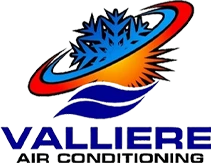As winter approaches, the quest for a warm, comfortable home takes center stage. Amidst the myriad heating options, the terms HVAC and furnace often surface, prompting homeowners to ponder their distinctions. In this exploration, we delve into the intricacies of HVAC and furnaces, deciphering their functions and merits to empower you in making informed choices.
As a licensed company, Valliere Air Conditioning & Heating, LLC comprehends the specific needs of residents and commercial properties. With a stellar BBB A+ rating, our commitment to excellence is more than a testament—it’s a promise. Our specialized heating service in Magnolia, TX, extends beyond the conventional, offering tailored solutions that redefine comfort and efficiency.
Understanding The Basics: HVAC And Furnace Explained
- HVAC: A Comprehensive Climate Control System: HVAC (Heating, Ventilation, and Air Conditioning) constitutes a flexible and integrated system crafted to manage the temperature, humidity, and air quality within a designated area. Unlike a standalone furnace, HVAC goes beyond mere heating functionality. It integrates heating and cooling mechanisms with ventilation, offering a year-round solution to maintain a comfortable indoor atmosphere.
The essence of an HVAC system lies in its capacity to adjust to varying weather conditions. During the scorching summer, it efficiently cools your living space, seamlessly transitioning to providing warmth when winter sets in. This versatility makes HVAC appealing to individuals seeking a comprehensive climate control solution for residential and commercial settings. - Furnace: The Heat Generator: Conversely, a furnace constitutes a distinct element within an HVAC system designed to generate warmth. Furnaces operate on diverse energy sources such as natural gas, electricity, or oil. Their principal role is the creation of heat, subsequently disseminated throughout the residence through an interconnected system of ducts and vents.
Furnaces demonstrate proficiency in promptly and efficiently elevating the indoor temperature, rendering them a favored option for residents in colder regions. Despite their efficacy in heating, it’s important to note that furnaces do not encompass the cooling and ventilation functionalities inherent in a comprehensive HVAC system.
Deciphering Home Heating: Unveiling the Differences Between HVAC and Furnace
- Components:
- HVAC: The critical components of an HVAC system include a central unit, ductwork, vents, a thermostat, and various control mechanisms. The central unit houses the heating and cooling elements, while the ductwork and vents distribute the conditioned air throughout the space. The thermostat acts as the control center, allowing users to set and regulate the desired temperature.
- Furnace: A furnace comprises essential components, including heat exchangers, burners, blowers, and controls. The heat exchanger facilitates heat transfer to the air, utilizing the burner as the primary heat source. The blower plays a crucial role in circulating the warmed air through the ducts and vents, while the controls oversee and regulate the overall operation of the furnace.
- Energy Efficiency:
- HVAC: HVAC systems are designed to focus on energy conservation, mainly by integrating contemporary technologies like variable-speed motors, programmable thermostats, and energy-efficient heat exchangers. The capacity to seamlessly transition between heating and cooling modes contributes significantly to enhancing the system’s overall energy efficiency.
- Furnace: Furnaces can vary in energy efficiency depending on factors like the type of fuel used and the technology incorporated. High-efficiency furnaces, equipped with features such as condensing technology, can significantly reduce energy consumption, making them more environmentally friendly and cost-effective in the long run.
- Cost Considerations:
- HVAC: The initial cost of installing an HVAC system is higher than a standalone furnace. However, the long-term cost-effectiveness comes from the system’s versatility, offering heating and cooling functions in a single unit.
- Furnace: Furnaces typically have a lower upfront cost, making them an attractive option for those on a budget. However, additional costs may arise if you decide to install a separate air conditioning system for cooling, as furnaces do not provide this functionality.
- Flexibility And Zoning:
- HVAC: HVAC systems offer flexibility in that they can be adapted to different climate control needs. They can be zoned, allowing for precise temperature control in specific areas of the home. This zoning capability contributes to energy efficiency by only conditioning the spaces that are in use.
- Furnace: Furnaces are less flexible in terms of functionality. While they excel in providing efficient heating, they lack the versatility of an HVAC system to cool and ventilate. Zoning capabilities are limited, often requiring additional systems for comprehensive climate control.
- Space Requirements:
- HVAC: HVAC systems generally require more space due to their all-encompassing nature. The central unit, air handler, and associated ductwork can occupy considerable space, making them suitable for homes with ample square footage.
- Furnace: Furnaces, being more focused on heating, have a smaller footprint. They are often installed in compact spaces like basements, closets, or attics. This makes furnaces a practical choice for homes with limited space for heating equipment.
- Installation Complexity:
- HVAC: Installing an HVAC system is more complex than a furnace due to its multifunctional nature. Proper sizing, ductwork design, and integrating heating and cooling elements require professional expertise. The complexity increases if zoning systems are incorporated for precise temperature control.
- Furnace: Furnace installation is generally more straightforward. While it still requires professional installation, the process is focused on connecting the furnace to the ductwork and ensuring proper venting. The relative simplicity can lead to a quicker and more cost-effective installation.
- Technology Integration:
- HVAC: HVAC systems often feature advanced technology integration, making them smart and energy-efficient. Modern HVAC units may include programmable thermostats, Wi-Fi connectivity, and sensors that optimize performance based on occupancy. Smart thermostats enable users to control temperature settings remotely, promoting energy conservation. Additionally, HVAC systems can integrate with home automation systems for seamless control and energy monitoring.
- Furnace: While furnaces can incorporate technological advancements, they focus primarily on heating. High-efficiency furnaces may come with features like variable-speed blowers and electronic ignition systems, contributing to energy efficiency. However, the level of technological integration in furnaces typically falls short of modern HVAC system’s comprehensive, innovative capabilities.
For those prioritizing year-round comfort and considering a heater replacement in Cypress, TX, HVAC systems offer a comprehensive solution, while furnaces provide efficient heating for colder climates. However, weighing these considerations can guide you toward the system that best fits your unique requirements.
Valliere Air Conditioning & Heating LLC: Your Trusted Partner for Indoor Comfort
When contemplating your heating or cooling needs, choose Valliere Air Conditioning & Heating, LLC, as your trusted partner. Our expertise extends beyond heating solutions— we’re dedicated to delivering a personalized approach to meet your comfort requirements. You can trust us for seamless and professional heating repair in Magnolia, TX to deliver unparalleled expertise with the comfort and warmth you deserve. Choose us for a personalized approach to your HVAC needs and experience the pinnacle of home comfort.
Contact us today, and let us be the key to unlocking unparalleled comfort in your home or business.









